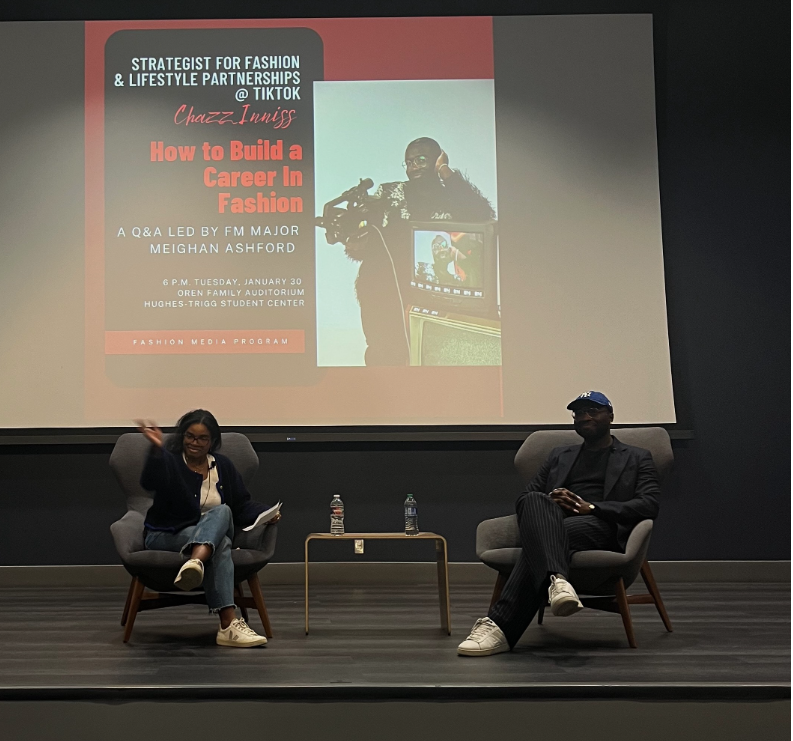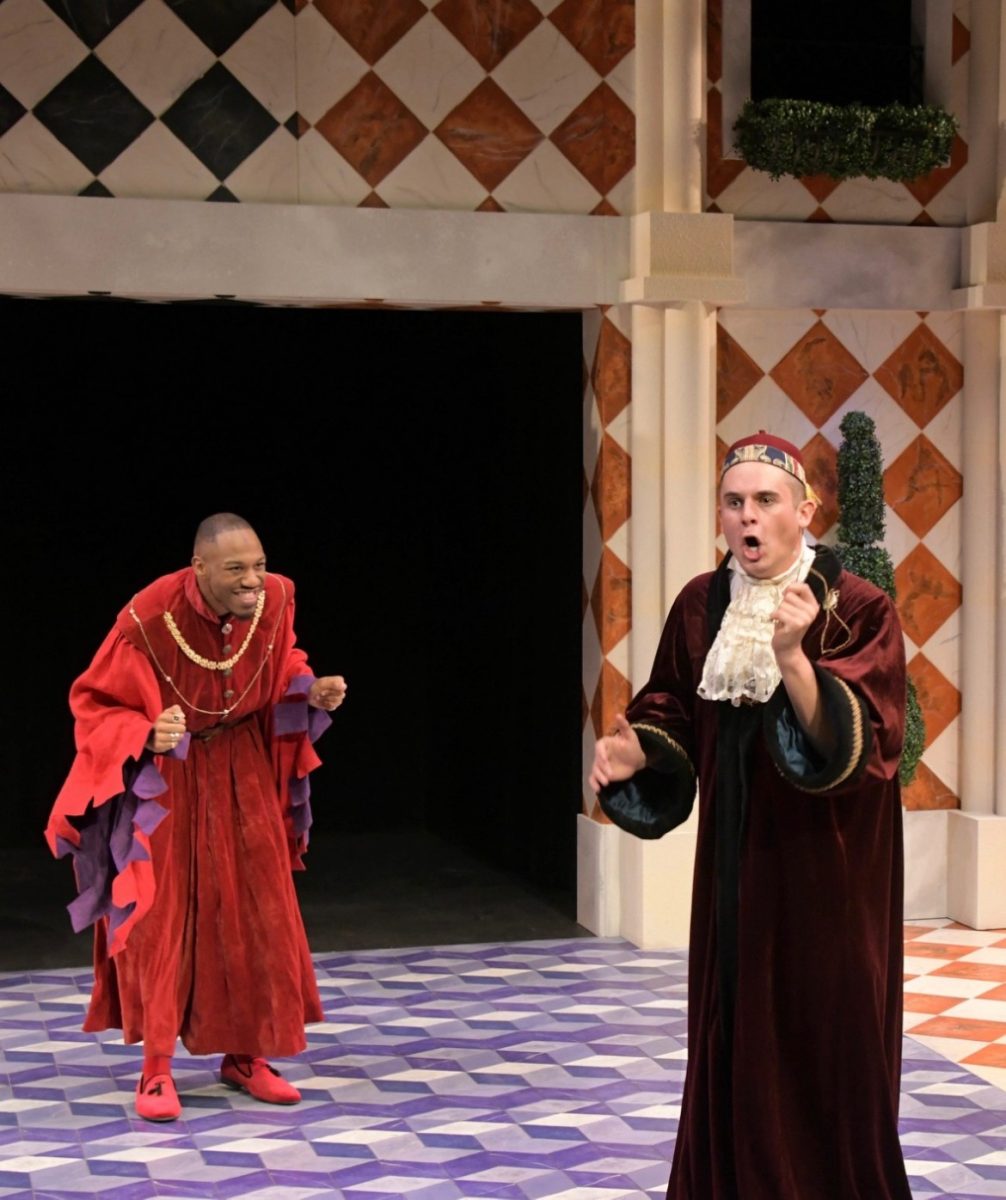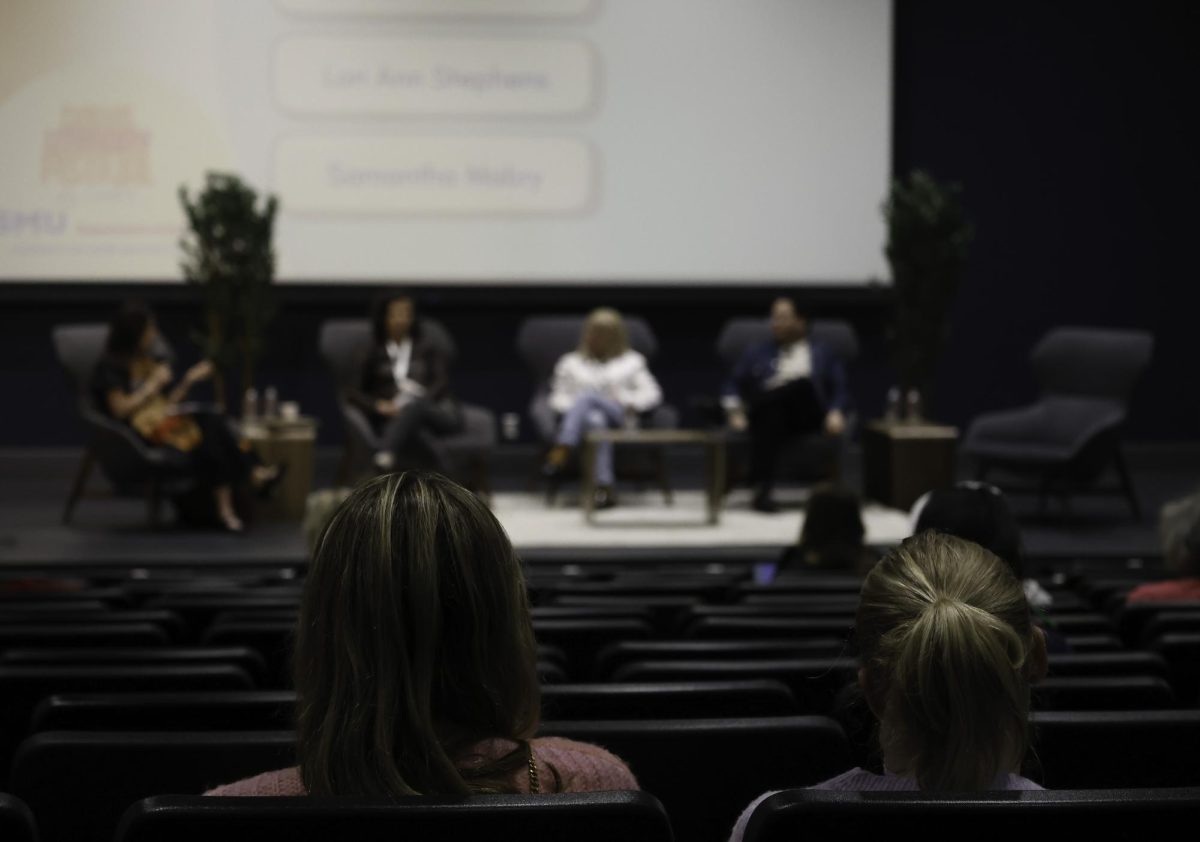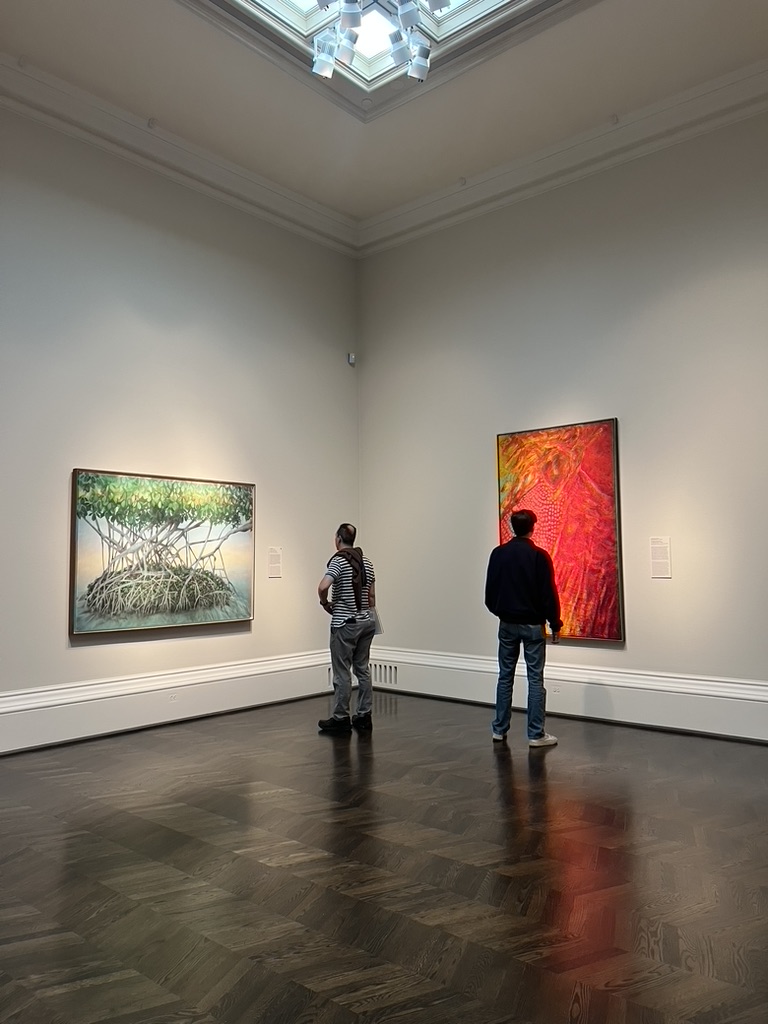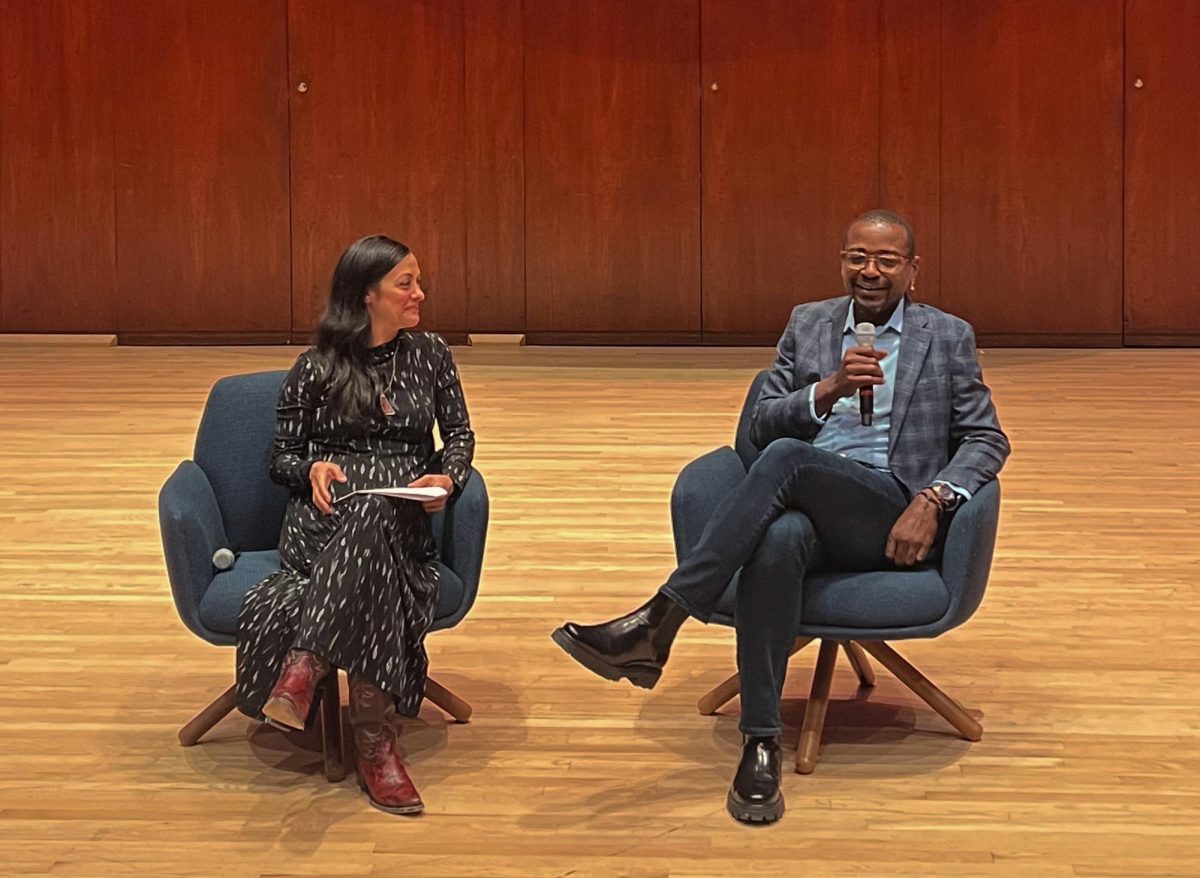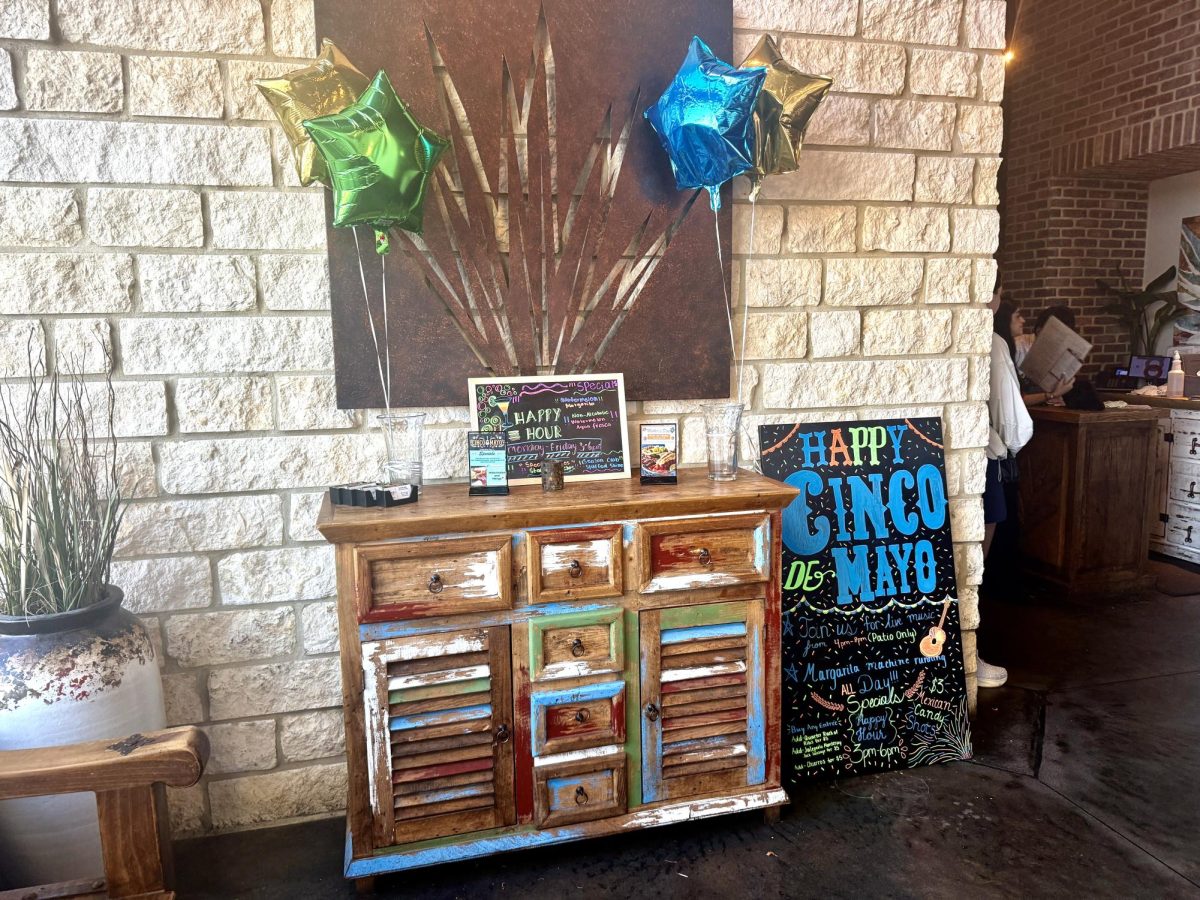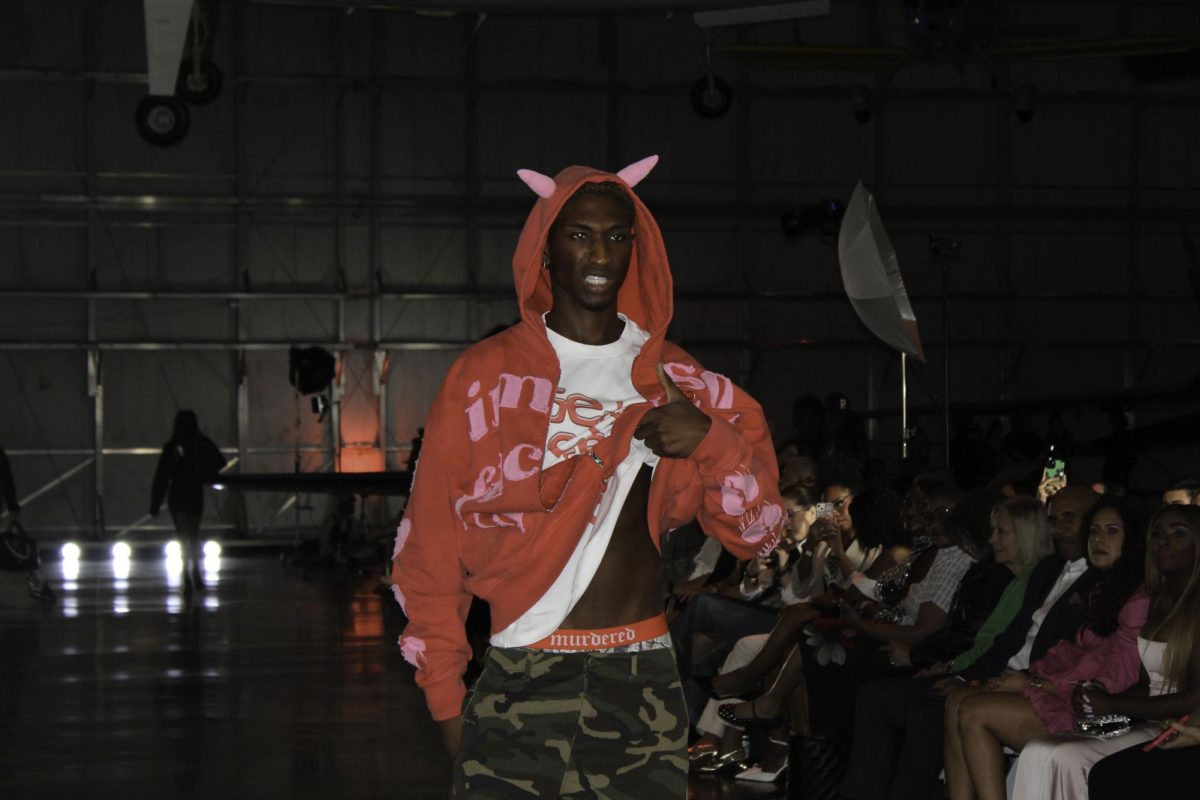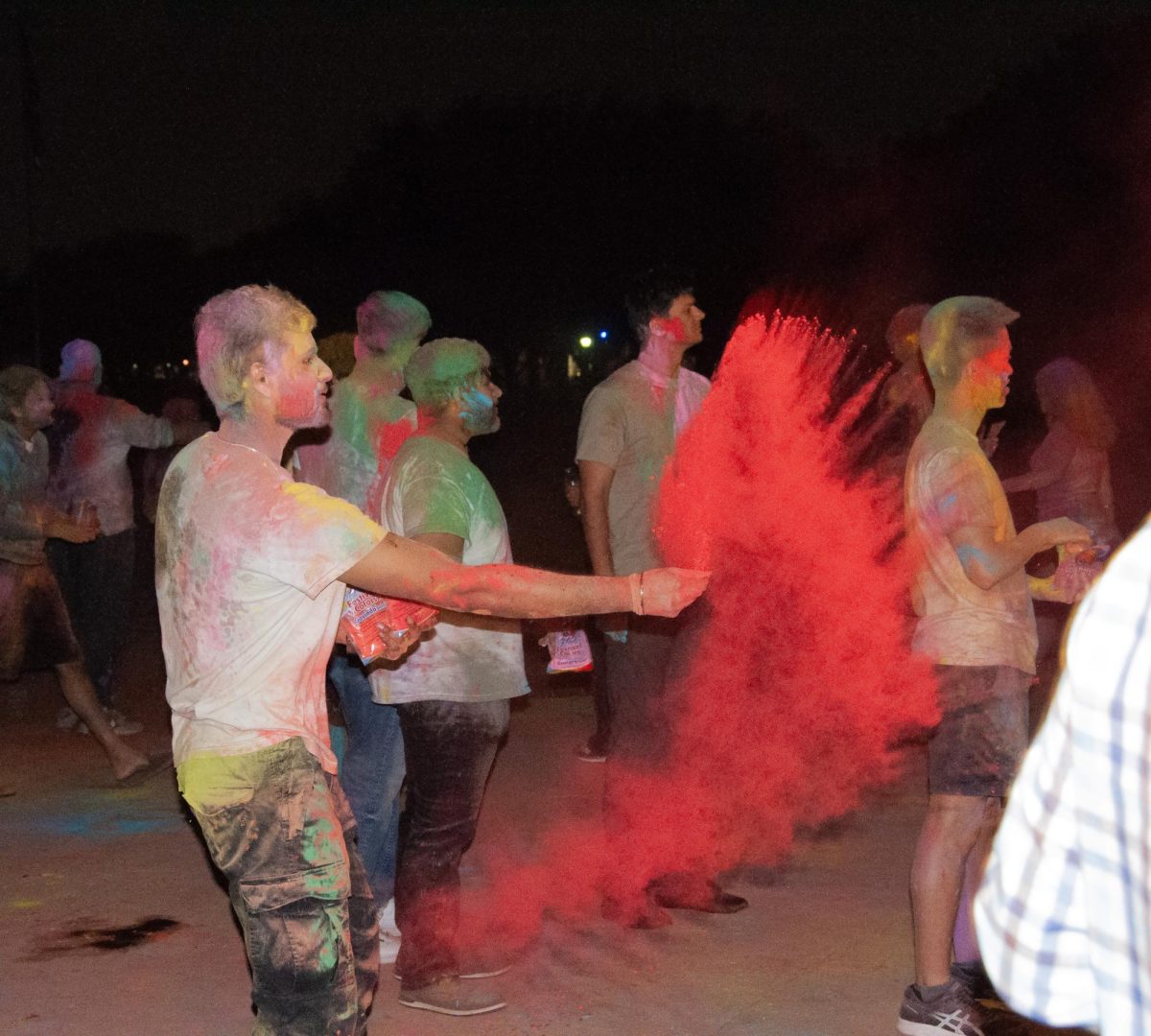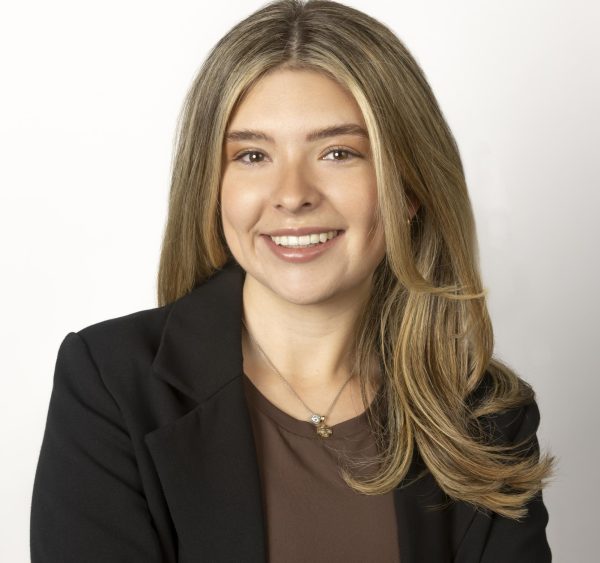On January 30th, SMU’s Fashion Media Program welcomed Chazz Inniss, a strategist for fashion and lifestyle partnerships at TikTok. Inniss joined fashion media major, Meighan Ashford, that night in the Hughes-Trigg Student Center for a discussion about his career and how to build a career in fashion. The Long Island native and Syracuse alum also met with The Daily Campus where he sat down with our podcast producer, Katie Bergelin, and one of our social media editors, Cloi Bryan. This interview, which was conducted at SMU’s Journalism School, dives into the landscape of fashion and lifestyle content creation on social media.
CLOI BRYAN: When did you find out you were coming to Dallas?
CHAZZ INNISS: Well, Professor Chessher reached out in November while I was in London for work, and I was like, this can be really fun. Then I had to talk to my boss about it and get it approved but she was like, it’s about TikTok but it’s more about you, the things your able to do, and how you can help these students understand how to have a career in media, journalism, communications, fashion, and all that so it was easy to get approved. But I’ve also never been to Dallas so I was like, why not? And I’ve been to Austin, and I thought Dallas can’t be that different.
KATIE BERGELIN: No, it’s really different. The fashion, the food, the lifestyle. Everything.
INNISS: I haven’t had time to explore, but I’m going to Honor Bar tonight so I think I’m going to get the Dallas experience.
BERGELIN: Oh, you’re going to feel like a quintessential Highland Park resident.
BRYAN: That is like the go-to Dallas restaurant. It is so good. That’s my favorite restaurant in Dallas.
INNISS: Everyone’s been saying to get their chicken sandwich or the kale Caesar so I have some ideas.
BERGELIN: So you currently work at TikTok in fashion and lifestyle strategy, so what has been your favorite part of working at TikTok?
INNISS: I think my favorite thing has actually not even been with TikTok at all to be honest. I think for me, my biggest dream was to work in the magazine industry and I have always wanted to do that ever since I fell in love with this TV show that you both might not know called Ugly Betty.
BRYAN: Yes!
BERGELIN: I love America Ferrera!
INNISS: Okay, thank God. America Ferrera’s my queen. But it’s really all about my time watching that show growing up, and seeing an amazing story of what the magazine industry was. And from that time on, I’ve been obsessed with magazines. I mean, my first magazine subscription was GQ Magazine. It was the July 2009 cover with Taylor Lautner. I originally picked it up to tell my mom everyone’s really into Twilight, so that’s why I got it but it was really because I thought Taylor Lautner was really cute and he was also on a GQ cover. And trust me, you all should look at that cover later and that whole story because it’s phenomenal. But I really fell in love with magazines and storytelling since then, and I wanted to have a career in the magazine industry so bad. I spent my undergrad studying magazine journalism with a focus in fashion communications and minor in web design and social media management because I thought that was the big time future of it all. Magazines were my whole life. I rigorously devour magazines. My wall in my room was covered with just magazine clippings and little mood boards of magazines, and I loved it. My mom actually called me a literal hoarder because by the time I left for college, I had about 240 in my room. I had subscriptions to GQ, Vogue, Good Housekeeping, Essence, Real Simple. And then I also had Saveur Magazine, Bon Appetit, and Conde Nast Traveler. I was just such a ravenous devourer of magazine content, whether that was just like the beautiful imagery or stories you’re getting from it. I mean being able to work with a lot of my favorite magazine brands has been a dream of mine. I remember GQ was my dream forever, and the fact that I get to work with them is amazing. Helping a lot of media companies learn how to tell stories in a new way, tell the future of storytelling, and really connect that storytelling with the future has been something I’ve been very, very passionate about. And I think even when I was graduating, I wanted to be on the forefront of the future of the media industry, and now I feel like it. That’s actually my favorite part about it because it’s so great to be able to work with all my favorites.
BERGELIN: TikTok definitely had a certain vibe during the pandemic. It was a way to connect people, and there were a lot of trends that people would go out and try. But now, post-pandemic, what have you seen the fashion and lifestyle space evolve into?
INNISS: I mean, one thing that’s really core and true to everything about TikTok, and especially fashion and lifestyle is it really celebrates self expression and your own personal style. That’s really core to it amongst everything else. Yes, everyone’s doing a little dancey dance and their little fit checks, but I think the most important thing is to allow people to feel like they can explore themselves and celebrate who they are. I think we’re also in a day and age where it’s less about having such a homogenous look, and people are really celebrating their individuality. I think TikTok has accelerated that in the biggest way where people feel like they have room, a space, and a platform to talk about their personal style, celebrate who they are, celebrate their identities, and see that celebrated in a big way because there’s other people who are connecting with that as well. I think it’s really evolved in that sense where it’s become such a platform, not just for entertainment but also exploration, education and massively self-expression.
BERGELIN: You also worked at People and PopSugar. In those workplaces, what’s a piece of advice or a skill you learned at those companies that you’ve taken into your job at TikTok and your career in general.
INNISS: At People Magazine, I think the biggest thing I took away is how to be fast. I mean, being able to tell quick stories, understanding headlines and understanding your audience is really, really key. Also, I learned about the art of celebrity interviews there. I think there’s a lot that I learned from that place specifically because of my first celebrity interview with Cara Delevingne. She was the new ambassador for Tag Hauer and I had to interview her. Everyone was only supposed to get five minutes. This was probably my first month out of college so I was really nervous about it. I remember her seeing how nervous I was and being like, “Oh my God, you’re so sweet.” She actually gave me fifteen minutes versus five minutes that everyone else got because she could tell I really wanted to do a good job on it. And I was so honored for that, and I feel like it allowed me to get really comfortable with that. I’ve interviewed Cara Delevingne, Mario Lopez, Tan France, and I’ve even interviewed Antoni from Queer Eye, who I love. I also interviewed him in college so you can find that article. It’s Baked Magazine “The New Food Expert on Queer Eye is a Snack.”
BERGELIN: That’s gorgeous!
INNISS: It’s such a good headline. Honestly, he ate that up and he said the headline makes him sound like such a tool, but it doesn’t. I mean it was a play on words because he’s the food guy so I said snack and he’s cute, so it’s easy. That taught me a lot but even beyond my time at People Magazine, just going back to student media like you all are doing, we learned how to craft our own voice. I was the editor-in-chief of Baked Magazine at Syracuse which is our on-campus food magazine, and we’ve won some magazine awards. But I remember thinking about what I wanted from that, and I really wanted to learn how to tell stories of food but in a really engaging friend-to-friend way. I wanted it to feel like the Cosmopolitan of food, you know, and this is when I was in college and Cosmopolitan was having that big resurgence on their website, and they got their new office that was so millennial pink, so all the millennials were like “Oh my god, Cosmo!” It really allowed us to see the opportunities that you could do storytelling in an engaging, fun, and voicey way, and I think I really learned how to craft that in student media. Then it made working on People Magazine and telling stories ten times easier. And then what was great about PopSugar was that in college, I learned that I was way more of an ideas person than a writer. And I think it’s important to learn in school what you’re good at and also what you’re not great at because I feel like it allows you to have a little bit more of a focus. When I entered Syracuse, I wanted to work for GQ and write celebrity profiles, and I’ll never forget this professor who told me that I should stick to things 500 words or less. It was amazing. It was great feedback, and I always tell people feedback is such a gift. That person could have let me stay on and be mediocre, and then I could have then gone on to do a bigger job, butchered it, and then probably been out of a job or lost a paycheck. And because of that, I can pivot and lean into things I’m honestly way better and more comfortable with. I think because I learned how to use my ideas for things like social, digital, and expand upon that, when it came to working at PopSugar where you have to think of the brand in a 360 way and how it comes to life not only in written content, but social, video, events, our makeup line, and everything, it allowed me to breathe life into a brand in a really tangible way. I loved having that ability because a lot of magazine brands, they’re changing and growing so much, so being able to have that big 360 brain allows you to think of ideas quickly and differently for everyone.
BERGELIN: TikTok has created big trends in social media. Do you think it’s important for creators to keep up with these popular trends in order to amass a following or do you think success comes from original content? Or do you think it’s a little bit of both?
INNISS: I would say my biggest thing when it comes to trends is would you rather be a follower or a trendsetter? I think no matter what you’re doing, you’d rather be an original. While trends are really, really great because they can be quick moments to grab a lot of engagement, they’re not sustainable to always follow them. I think when you’re thinking of trends, you should even think culturally and think like what’s a larger macro-trend in the way we consume content, and then lean into something like that. Then you can then add your own unique spin on it that’s ownable to you because if you just are following trends, you’re not really saying anything about yourself. You’re just surfing, basically, because you’re riding a wave, you’re not really like making waves. I think the best kinds of creators, the best kind of people who are making content nowadays, or the best kind of media we can even consume are the things that feel original and different. If everyone was following the same trends, it would just be homogenous content for the rest of our lives and we’d honestly be bored. Think about the content you enjoy the most. It’s not everyone doing the same thing, it’s everyone able to do something a little bit differently.
BERGELIN: In lifestyle and fashion, “get ready with me” videos are super big and it’s been a very consistent format. What kind of ways can a creator differentiate themselves while still using these really great formats that people tend to enjoy a lot?
INNISS: I do enjoy them a lot, but I think those things are, like I said, macro-trends. They allow you to have a foundation, but you need to jump off of it or you need to add some kind of value to it so people can feel like they’re gaining something from watching your whole experience. At the end of the day, you are just a random person putting clothes on, so it’s like who are you and why should I care. So you have to add I’m going to this event or I’m going to be doing this. There needs to be something there that you can add to and attribute value to so people want to engage. It’s like, okay, you’re getting ready, but why should I care? And if you don’t already have an established community and audience, then there’s no reason for them to care.
BERGELIN: You talked about macro-trends, so let’s talk a little bit about micro-trends. I was on TikTok today, and the Free People barrel jeans have become super popular. Free People has done a ton of promotion for it, but one creator I saw just called the jeans a micro-trend that’s just going to fizzle out because there’s so much promotion for the jeans rather than other pieces. Do you think it’s important for creators, especially in the fashion and lifestyle space, to promote micro-trends to stay on top of the trends or do you think it’s more worthwhile to promote pieces they genuinely enjoy or pieces that are going to have longevity in fashion?
INNISS: I almost feel like you answered your own question, but my big perspective being in the fashion industry for a long time is that it’s more important to promote timelessness and longevity than just these quick small hitting trends to be relevant. Because things that make you relevant don’t make you long lasting, so you really need to focus on things that are celebrating the value and originality that you’re bringing into the space and to the industry. Even the biggest designers are not big just because they’re following trends, and I think they’re big because they’ve done something different and they’ve done something unique. That’s the kind of perspective you’re going to need to have, like, how can I put my own unique spin on something. Yes, there may be a trend but what about this trend can I add to it that’s ownable to me, so I’m not doing what everyone else is doing. For instance, I talked last night with the Look Magazine girls about trends, and they were talking about Sambas and other shoes you can wear instead. I was like okay, but how can we take it a step further because you’re not going to stop people from buying Sambas. You can give them suggestions, but how about you also think about alternative ways to style your Sambas so they feel unique to you. And there’s a lot of different things, I mean, Sambas are just a baseline shoe. It’s like a piece of bread. You could just add things to it to make it uniquely your own. For example, I was wearing Sambas last night, but mine had pink ribbon laces as opposed to just regular laces. That’s even a small thing, but I think it’s about really adding your own unique spin to it to make it original for you as opposed to just following it.
BERGELIN: Social media has made its way into the business plans of a lot of companies and news organizations, so how do you think journalists and news organizations can best present their content on social media?
INNISS: I think the key thing is consistency. You need to be consistent with your storytelling, but I think it’s important to figure out how you can attribute specific value to the audience. That’s by creating things that provide value like education, and those deeper things are ways for you to get in touch with your audience in a deeper way and I think that’s what they’re going to need to do. These audiences may be familiar but aren’t necessarily following all the time, so it’s like how can you create that sense of community. There’s consistent formats and things you can lean into that can breed that and bring that to life. That’s always my big suggestion, especially with a lot of the media companies I work with. It’s like, yes, you have this built in legacy, but what can you do with this legacy to then build a new community on TikTok because your community on TikTok is not gonna be the same as your audience on any other platform. So you’ve got to figure out a way that you’re going to reach them and reach them in a different way.
BERGELIN: I think a lot of our readers may not go on social media setting out to be influencers, so how can they make the most of their social media if they’re not setting out to be an influencer but just want to have fun with it?
INNISS: I think the thing is like social media doesn’t have to be a cash grab or a place for revenue, it could really just be a place for you to learn, explore, and have fun. And I think what’s great about TikTok is it allows you to just explore all your personal interests, especially your niche interesting ones. I mean, one of my favorite creators is @geodesaurus, and she does content about spooky, haunted bodies of water, which I love. Before I didn’t know I loved it, but I’m so obsessed with it now. I think social media is a place for you to explore and express yourself, so continue to do that. Don’t put pressure on yourself to become an influencer or celebrity unless you actively want to do that, then by all means do that. But it doesn’t have to be that, it could just be something that you do for fun and you do as an escape. Honestly, most of the time I’m mainly just a viewer on TikTok, and I love that. I love being able to indulge in a lot of my favorite content creators and my favorite content, and enjoy it just as that because it’s a great way to stay entertained but also informed and learn about new things, too. I discover new recipes that I love, I discover new shows I want to watch on there, and I think that’s kind of like what I like having it for as opposed to putting pressure on it to be something that it doesn’t need to necessarily be for me, but if if someone wants to do that they totally can.
BRYAN: I have one more question. What’s been your favorite part of the work environment at TikTok?
INNISS: I think my favorite thing is the people I work with. Everyone is extremely smart, super passionate about what they do, and I think they just love the platform and love storytelling. I think I’m just in a place where I’m so excited about everyone I work with that I’m excited to see them when I work, and that always feels great. I think as you all are entering in your career it’s really important the people you work with on a regular basis. It’s great to work at these big companies, but let’s say they don’t really have people you vibe or get along with then that’s not going to be a place you want to necessarily be. So I think it’s important to prioritize how you also feel with these people because you spend a bunch of time, most of your life, at work. Not saying that they have to be your best friends, but I think it’s important to have a place where you feel comfortable, and you can vibe, and you feel like it supports your creativity and exploration.
BERGELIN: Awesome. Thank you so much for being here
BRYAN: Thank you for being here.



